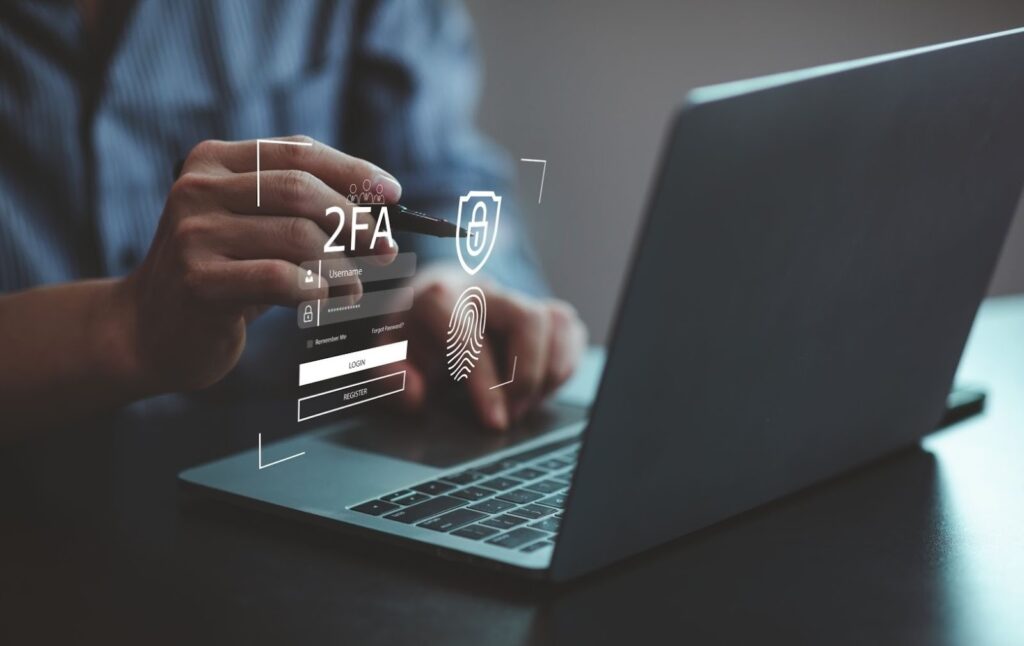
It should go without saying, but every developer should possess the knowledge of the best cybersecurity practices. Applications and systems are dotted with vulnerabilities that can be exploited to compromise user data. Cybersecurity literacy is a great starting point for developers to prevent security incidents and maintain integrity in their projects. With the ever-increasing threats of today’s digital world, developers should be empowered to protect their projects from any potential cyber threats. Building cybersecurity into the development process not only helps mitigate risks but also contributes to the longevity of the software and instils trust among users.
Understanding Common Cybersecurity Threats
Overview of Common Threats
Cybersecurity threats are a constant worry in today’s digital world. An application is at significant risk of data security issues because of malware, phishing and ransomware. Malware is the most common type of cyber attack. It is designed to infiltrate, damage or disrupt a system. Malware includes viruses, worms and trojans – all of which spread from infected files, websites and even legitimate software that has been altered. An application may experience data corruption, complete system failure and other problems when infected with malware. Phishing is an attack wherein an attacker tricks someone into providing sensitive information (for example, a password or credit card number) by pretending to be a trustworthy organisation. Phishing attacks are often sent by email or made on fake websites. They can cause mass breaches of personal and financial data. Ransomware is a malware attack where an attacker encrypts a victim’s data and demands payment to restore access. This threat disrupts a business’s access to important data. It has the potential to result in significant financial losses and damage to a business’s reputation.
The potential impact of these threats on applications and data can be huge. A successful malware attack could result in unauthorised access to sensitive information, the corruption of important data or even the complete halt of services available through the application. Phishing or ransomware attacks could lead to data breaches, damage user trust, and require expensive cleanup efforts. As a developer, it’s important to be familiar with these common threats because knowing the nature of the attacks that could happen and how they could occur can help build secure applications in the first place. With knowledge of the risks and how they can materialise, developers can make proactive decisions to mitigate the possibility of these issues affecting their projects and their users.
Specific Threats Developers Should Be Aware Of
Besides the general cybersecurity threats that affect every aspect of digital security, developers also need to be especially mindful of specific vulnerabilities that could directly impact the security of their applications. SQL injection is one of the most common – and dangerous – threats in web development. In an SQL injection attack, an attacker manipulates a website’s SQL query by injecting malicious code into some kind of input field (e.g., search box or login form). If the input is not properly sanitised, the attacker can gain unauthorised access to the database, retrieve, modify or delete data, and even take control of the entire application. The consequences of a successful SQL injection attack can be dire, from data breaches to loss of customer trust to legal repercussions.
The second critical risk is cross-site scripting (XSS) attacks. In these attacks, an attacker injects malicious scripts into web pages that are executed in the user’s browser. The injected scripts can steal session cookies, redirect users to malicious websites or show them fake content. Most XSS attacks exploit weaknesses in input validation. For example, an attacker may be able to inject malicious code into a comment field in a web application. XSS attacks are highly dangerous because they can breach the security of users’ sensitive information, disrupt user sessions, and damage the reputation of the compromised website.
A further threat is man-in-the-middle (MITM) attacks. These take place when an attacker intercepts the communication between two parties and, potentially, alters the communication without the parties realising it. This can happen when using unsecured Wi-Fi networks or when an attacker has compromised a router or other infrastructure. MITM attacks can steal sensitive data such as login details, credit card details or private messages. As a developer, you should always make sure that all communications between a client and server are encrypted and secure using protocols such as HTTPS and TLS to prevent MITM attacks.
These specific threats are relevant to developers because they’re often the surface area within which attackers get a foothold when trying to attack an application. Knowing about these risks and being able to apply appropriate security controls could have helped to prevent many vulnerable apps from being compromised in the first place.

Best Cybersecurity Practices for Secure Coding
Writing Secure Code
Developing secure code is the basis of making applications cyber threat resilient and sensitive data safe. It helps to prevent vulnerabilities that hackers might take advantage of. The most important secure coding practice is input validation, which ensures that all inputs (data) are validated before the application processes them. Input validation protects against common attacks such as SQL injection and XSS by rejecting input data that is not expected or malicious. Therefore, input validation should be done on both the client and server side of application development to filter input data and accept only properly formatted data effectively.
Error handling is another important component of secure coding. Applications must be coded to handle errors gracefully, such as returning a user-friendly but non-informative error message. An informative error message with detailed information about the internal application (such as a stack trace or database error) is like the gift that keeps on giving to an attacker. It can show what libraries and frameworks an application uses, how they’re arranged, and even what exact functions and code are being executed. This kind of information can point an attacker to a vulnerability. The proper approach is to use generic error messages that users see but aren’t informative while logging detailed error data – securely – for troubleshooting purposes.
This also means writing secure code, for which it is a good idea to use secure libraries and frameworks. Many popular development frameworks already offer security features that can help protect against common vulnerabilities. Some frameworks don’t let you build CSRF-vulnerable code, while others (most modern JavaScript frameworks) come with anti-XSS features. Using such secure frameworks and keeping them up to date with the latest versions automatically gives you the benefits of the latest security improvements and can help ensure that you don’t introduce any vulnerabilities to your applications.
Secure Authentication and Authorisation
Appropriate authentication and authorisation schemes must be implemented to ensure that sensitive data and functionality are made available only to authorised users of the application. Password hashing is one of the most fundamental techniques of secure authentication. Instead of storing plaintext passwords, passwords should be hashed using cryptographic hashes such as bcrypt, Argon2 or PBKDF2. Hashing passwords makes it much harder for attackers to reverse-engineer passwords, even if the attackers obtain access to the hashed data.

Another way to mitigate the impact of a password problem is multi-factor authentication (MFA), in which a user needs to prove their identity through two or more factors – something you know (a password), something you have (a mobile phone), or something you are (biometrics). MFA is a strong control for preventing an unauthorised person from gaining access, even if a user’s password is compromised.
Role-based access control (RBAC) is a vitally important mechanism for managing an application’s permissions. RBAC allows the developer to create roles within their application and then restrict users’ access to features or data depending on their chosen role. Assigning roles in this way means that users have access only to the information and functions that are relevant to their role, minimising the impact of a security breach. RBAC adds a further layer of protection, allowing developers to define roles and permissions more precisely so as to limit the possible damage from any security issues within their application.
Managing Dependencies and Third-Party Libraries
While third-party libraries and dependencies are a norm in modern software development, they create a new attack surface. Attackers can leverage security vulnerabilities in third-party components to compromise the application. Therefore, it is crucial to manage and secure them. One of the most important recommendations in this regard is to keep dependencies up to date. Software libraries and frameworks get fixed and updated on a frequent basis to patch a newly discovered security vulnerability. Using an out-of-date version might expose the application to known threats.
Vulnerability scanning is another critical practice. Developers should run automated tools against their dependencies to find known vulnerabilities and fix them. Security scanning tools such as OWASP Dependency-Check or npm audit can find insecure dependencies in a project. As developers add new dependencies to their projects, they should evaluate whether the component is safe and reliable. Review the update history, check for active maintenance, and ensure that the library is coming from a reputable source.

Data Protection and Encryption
Importance of Data Encryption
One of the cornerstones of cybersecurity is data encryption, which renders user information secure by scrambling it into an illegible jumble until the authorised key is used to unscramble it, even if the information gets compromised and falls into the wrong hands. This is an absolute necessity if the confidentiality and integrity of user data are to be maintained – such as in industries where sensitive information like financial records, personal identifiers or health data is involved – because encryption is a kind of final precaution. When all other security measures fail, it is reassuring to know that sensitive information can remain secure.
There are two primary forms of encryption: encryption at rest and encryption in transit. The first protects data stored on devices – such as servers, databases or hard drives – when it is not actively being sent or received (that is, when it’s at rest). The second, encryption in transit, protects data as it travels between systems, for example, when it’s being sent over the internet or between components of an internal network. Both are necessary for a robust security strategy since they protect data at all stages of its life – from the point it’s stored to the moment it’s sent to another system.
Implementing Encryption in Development
Encryption on the application side is also important. Still, you have to plan it out carefully and stick to best cybersecurity practices. One of the fundamental building blocks of keeping information safe in transit is Transport Layer Security (TLS) and its predecessor, Secure Sockets Layer (SSL). TLS and SSL are protocols that encrypt data in transit, basically, anything you send over a network – your login credentials, your payment details, your personal information. A malicious hacker on the same network or one directly connected should not be able to use that information. Suppose you’re communicating personal data and financial transactions between a client and a server. In that case, you should ensure that all that communication is encrypted with TLS/SSL.

Another often overlooked (and potentially dangerous) aspect of deploying encryption is the management of keys. Good key management means that encryption keys are generated, stored and rotated in a way that maintains security without allowing bad actors to access the keys. One of the most common weaknesses in key management is the direct insertion of encryption keys into the application’s source code, which is a basic way for attackers to move through an application if it gets compromised. A much better solution is to use secure key management solutions, such as hardware security modules (HSMs) or key management services (KMS) from cloud providers, to store and manage the keys. It is also important to routinely update keys with a policy for handling the expiration and revocation of keys to maintain the strength of your encryption over time.
Protecting User Data and Privacy
Aside from encryption, ensuring that your user data is protected requires an ongoing commitment to privacy and compliance with applicable law. For example, the General Data Protection Regulation (GDPR) that took effect in Europe in 2018 and the recently adopted California Consumer Privacy Act (CCPA) both require companies to take steps to protect user data, including data masking, anonymisation and secure storage. Data masking obfuscates specific data within a database to protect it from access by unauthorised parties without preventing its usefulness for development, testing or analytics. Anonymisation removes personally identifiable information (PII) from data sets to ensure that you cannot identify individuals from your data.
To ensure that user data is adequately protected, developers should also employ measures for secure storage, such as encryption for data at rest and in transit and restricting access to sensitive data to authorised users. Developers should also consider tokenisation, which replaces certain elements of sensitive data with a token that can be used within the system but that hides the sensitive data element itself. All of these efforts help to ensure that data is not accessible to unauthorised parties and that privacy regulations are met, providing additional confidence to users and building trust and confidence.
Secure Development Lifecycle (SDL)
Integrating Security into the Development Process
The Secure Development Lifecycle (SDL) is a process that weaves security considerations into the software development lifecycle, ensuring that security is considered from the beginning versus an afterthought. SDL focuses on building security in the design, development, and deployment of software and decreases the chance of vulnerabilities being introduced into the system during development. SDL promotes the development of harder targets, leading to more secure software that is more resistant to attacks and less likely to have security flaws.
Integrating security throughout the development process begins at the planning stage, where security requirements can be identified and reflected in the project’s design. Secure goals are defined, threats are identified, and mitigations are determined. In the development stage, secure coding principles are followed, tools that automatically and dynamically identify security vulnerabilities are used when code is written, and white- and grey-box testing is performed to identify any potential weaknesses. During the testing stage, static and dynamic analysis, penetration testing and code inspection are performed to identify and remediate weaknesses. In the deployment stage, security configurations are applied, and the software is continuously monitored for threats.

Conducting Security Testing
Security testing forms an integral part of the Secure Development Lifecycle, helping to detect problems before an attacker has a chance to exploit them. Static analysis is a review of the source code without running the program, which can be used to detect potential problems such as buffer overflows or SQL injection vulnerabilities at an early stage. Dynamic analysis runs the application and then tests it while it is running in order to find problems that may not be apparent in the code, such as authentication problems or insecure configurations.
Penetration testing is another vital part of security testing, where the application is exposed to simulated real-world attack vectors in order to discover potential weak points in the application that an attacker could exploit. Through penetration testing, either an internal security team or an external security contractor could identify weaknesses in the security posture of the application. In addition to penetration testing, code reviews are also important, where developers manually review the source code to discover security problems that automated testing tools may miss. By combining automated testing methods with manual testing methods, developers can ensure a thorough security testing of their applications.
Continuous Monitoring and Patching
Security is not an event; it is an ongoing process of maintaining and improving the state of security. Security work doesn’t stop when an application has been deployed. There are monitoring and alerting services that check continuously for activity that might indicate a compromise or an attack. Detecting these activity signals quickly enables developers to respond to a potential incident before it escalates.
Patching is a key aspect of ensuring the security of the application over time. New vulnerabilities are discovered every day, and they must be addressed as quickly as possible in order to avoid them being exploited by cybercriminals. If an application is not patched quickly, it will become vulnerable to various attacks. This means that it is crucial to have a process in place for securing an application throughout its lifetime, which involves releasing patches regularly, checking patches before deploying them and communicating with the end users about why they need to apply the update. By ensuring that the application is continuously monitored and patched, developers are able to maintain security across the lifetime of the application.
Building a Security-First Culture in Development Teams
Educating and Training Development Teams
It is imperative that a culture of security exists in the development team and that developers remain knowledgeable about best cybersecurity practices and the latest threats in cyber security. The digital environment is constantly evolving, and new threats and vulnerabilities emerge quite frequently. In order to safeguard data, applications and the user, development teams need to be continuously learning and improving their methods. Regular training and workshops, as well as access to resources on recent cyber security trends, secure coding, and new security testing tools, will help achieve this.
Cybersecurity certifications for development teams can further enhance their security expertise. Certifications such as Certified Secure Software Lifecycle Professional (CSSLP) or Certified Information Systems Security Professional (CISSP) would provide formal recognition of the security expertise of a developer, with a key objective of ensuring that security is considered in every stage of the software development lifecycle.

Encouraging Collaboration Between Developers and Security Teams
Developing a closer collaboration between developers and security teams can infuse security across the SDLC. Ensuring that security follows an SDLC can be difficult if there is some distance between development and security teams. We can overcome this by developing clear communication channels so that cybersecurity practices can be shared and understood across the organisation. This can include regular security reviews and meetings between developers and security experts that help identify risks early in the development process and make sure that security is not an afterthought but rather a consideration when making design and implementation decisions.
Other ways to foster collaboration include creating cross-functional teams composed of both developers and security professionals who can work together to define and discover security requirements, perform threat modelling to identify potential vulnerabilities and instil security controls throughout development. An organisational culture that encourages collaboration also dispels the notion that security is a separate function and implies that developers bear sole responsibility for creating secure software. When teams work together and share joint responsibility for security, everyone becomes aware of the risks posed by breaches and the importance of protecting user data and the integrity of their apps.
Conclusion
Every developer should be aware of common cybersecurity threats and take security seriously from the beginning of their work. This helps to avoid vulnerable applications and properly protect user data. Every developer needs to be up-to-date on cybersecurity skills and habits and put these into practice in their day-to-day projects. Secure coding helps to protect user data and builds trust in your software, leading to long-term success and reliability.

